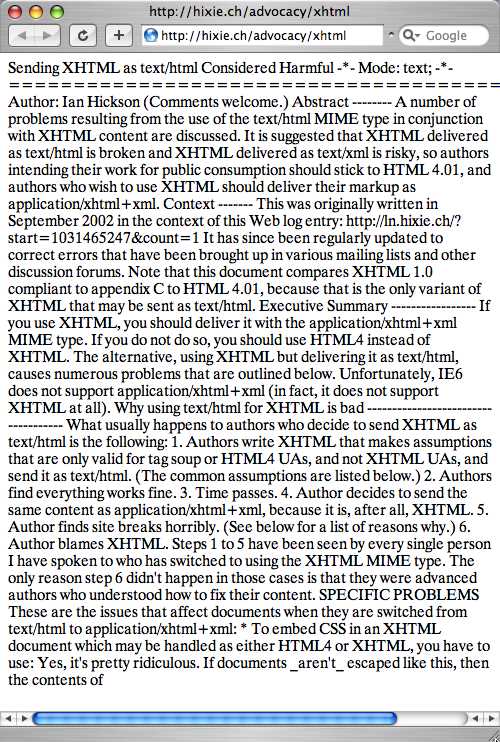I recently stumbled across an old copy of the Demoroniser (which my American-trained sense of spelling keeps trying to spell as demoronizer), a script designed to correct some of the, well, moronic HTML generated by Microsoft Office. Aside from flat-out coding errors, Office would use non-standard characters for things such as curly quotes or em-dashes that would only show up on Windows computers. If you viewed these sites on a Mac, a Linux box, a Palm, etc., they would seem to be missing punctuation everywhere. His solution was to convert these to their plain-ASCII equivalents.
Over the last year or so, WordPress and A List Apart have converted me from “stick with the lowest common denominator” to “let’s show real typography.” Since the days of the Demoroniser, Unicode has become a standard part of HTML, so modern browsers* can either display a full range of characters or convert them to something they can display. You probably won’t be able to see Chinese text in Lynx, but a properly encoded curly quote—“ or ”—will show up as a plain old ".
For one thing, real typography looks much nicer. Continue reading →
